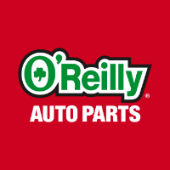-
Welcome to Auto Parts Forum
Whether you are a veteran automotive parts guru or just someone looking for some quick auto parts advice, register today and start a new topic in our forum. Registration is free and you can even sign up with social network platforms such as Facebook, X, and LinkedIn.
Are you buying the right coolant / antifreeze? Technology...
-
Similar Content
-
- 0 replies
- 23 views
-
- 0 replies
- 31 views
-
- 0 replies
- 28 views
-
- 0 replies
- 36 views
-
- 0 replies
- 39 views
-
-
Similar Topics
-
By Counterman
In this aftermarketNews Executive Interview, Johannes Crepon, PDM Automotive Co-Founder & CEO, discusses the company’s platform, how it helps parts suppliers keep their product data up to date, how the use of AI technology makes e-commerce easier for suppliers and distributors, what the company has planned for this year, and more.
aftermarketNews: PDM Automotive provides commerce software for auto parts suppliers, manufacturers, resellers and distributors. Give us a brief overview of how aftermarket companies have found partnering with PDM most beneficial.
link hidden, please login to view Johannes Crepon: The genesis of PDM Automotive was rooted in my own experiences and challenges as the founder of Velocity Automotive, an ecommerce company that sells parts for American cars throughout Europe. At Velocity, we faced difficulties connecting with suppliers, managing product data, and ensuring brand visibility. Recognizing these industry-wide issues, I started PDM Automotive to increase efficiency in the automotive aftermarket through seamless connectivity between suppliers and retailers.
The PDM Automotive platform bridges the gap between auto parts suppliers, manufacturers, resellers and distributors. Manufacturers gain unprecedented transparency into where and how their brands are sold, enabling effective brand management and strategic decision-making. Resellers benefit from expedited access to up-to-date product data, reducing hurdles in acquiring and maintaining catalogs and allowing for agility in responding to market trends.
At its core, PDM Automotive fosters connections and streamlines information flow across the automotive aftermarket. By providing a platform that enhances transparency for manufacturers and accessibility for resellers, we’re creating an ecosystem that elevates the entire industry.
AMN: One of the hallmarks of PDM’s technology is allowing for a “seamless exchange of accurate and timely content across every facet of the automotive industry.” Tell us how PDM assists parts suppliers in keeping their product data up to date. How can the company help suppliers better adhere to ACES & PIES standards?
Crepon: While ACES & PIES has become the most relevant data standard in the Americas, its implementation across the industry has not been without challenges. The standard itself, although comprehensive, does not fully address the intricacies of data exchange, with many resellers interpreting and implementing the standard differently, leading to a fragmented array of data requirements.
Recognizing these challenges, our platform goes beyond merely supporting ACES & PIES standards; we enhance the standards with our proprietary connectors and algorithms, tailoring product data to meet the needs of every receiver. Suppliers can manage their data from a centralized platform, and we tailor this data to comply with the diverse interpretations and requirements of resellers across the industry. This process saves significant time and resources for suppliers and ensures that their product information is accurate, consistent, and easily accessible by resellers and end-users alike.
Our technology “puts ACES & PIES on steroids,” ensuring suppliers’ data is always optimized for every channel, leading to a more efficient supply chain, increased product visibility, and a better customer experience. is a testament to our commitment to innovation and efficiency in the automotive aftermarket.
Our ongoing development of proprietary connectors and algorithms signifies PDM’s dedication to continuous improvement. As the industry evolves, so do the standards and requirements for data exchange. PDM is at the forefront of these changes, ensuring our partners have the tools and support necessary to navigate the dynamic automotive aftermarket effectively.
AMN: PDM allows brands to sell parts anywhere—from Amazon to national retailers and local parts suppliers. How is the company creating sales opportunities for brands while minimizing channel conflict?
Crepon: Historically, brands struggled with over-distribution, diluting the brand image and causing inconsistent product presentation due to the lack of a cohesive strategy regarding distribution and authorized reselling partners. The rise of online marketplaces has further complicated this scenario, making it imperative for brands to actively manage how their products are represented across all channels.
PDM addresses these challenges by offering a platform that guarantees high-quality listings on marketplaces like Amazon, eBay, and Walmart, while adhering to Minimum Advertised Price (MAP) policies. This strategic approach allows brands to protect their interests across all channels, including traditional channels, which are often jeopardized by price dumping on online marketplaces. By ensuring that products listed on these platforms are presented in a manner that reflects the brand’s standards and pricing policies, PDM helps maintain the integrity of the brand across the digital landscape.
Additionally, our platform gives brands tools to actively manage their distribution, image, and product presentation, particularly important as consumer preference shifts towards online shopping. This allows brands to maintain control over their narrative and pricing.
With PDM’s technology, brands can navigate the complexities of modern retail, ensuring that their products are distributed in a way that supports their overall sales strategy while protecting the channels most valuable to them. This holistic approach to channel management is vital in today’s market, where visibility across a multitude of platforms is not just an advantage but a necessity.
AMN: The company uses AI to generate SEO titles, descriptions and marketing copy for products based on keywords and inputs in just seconds. In what other ways is PDM looking to use AI technology to make e-commerce easier for suppliers and distributors?
Crepon: While our use of AI to generate SEO-optimized titles, descriptions, and marketing copy in mere seconds showcases our commitment to leveraging technology for efficiency, it’s just the tip of the iceberg regarding our AI applications.
Our approach to AI technology is both strategic and discerning. Recognizing that AI’s strengths lie in its ability to process and optimize large sets of data quickly, we are mindful of its limitations, particularly when it comes to the precision required in our core data set—the richest automotive parts catalog in the industry. Accuracy is paramount, and while AI offers many opportunities, it is not inherently accurate. This understanding shapes how we integrate AI into our operations, ensuring that the reliability and accuracy of our core data are never compromised.
One key area where we leverage AI is in the normalization of complex, non-structured data that has accumulated in the industry over the last century. This task, daunting for human teams due to the sheer volume and variability of the data, is where AI shines. Our engineering team utilizes AI algorithms to sift through and organize this data into a coherent, structured format. This normalization process improves the quality of our catalog and enhances the efficiency and accuracy of data management for our customers.
Once we have perfected the data within the PDM catalog, we use AI to optimize it for specific channels. This optimization process involves adjusting product data to meet the unique requirements and standards of various e-commerce platforms, ensuring accurate presentations of our customers’ products, regardless of where they are sold. In doing this, we enable suppliers and distributors to maximize their online presence and sales potential across multiple channels.
We’re exploring other ways to integrate AI into our solutions to further simplify and enhance e-commerce operations. These include predictive analytics for demand forecasting, AI-driven recommendations for inventory management and automated customer service solutions to improve buyer engagement and satisfaction.
AMN: PDM was founded in 2017, and since it has grown exponentially. What does the company have in store for 2024? What can we expect from PDM in the next five years?
Crepon: In 2024, we’re set to expand our reach and capabilities. Our recent investment in upgrading our system’s underlying infrastructure has positioned us to take full advantage of the opportunities that lie ahead. This strategic enhancement ensures our platform is scalable, resilient and capable of supporting our future ambitions.
Our strategic priorities include developing more connectors, forging new partnerships, and expanding our catalog. Developing more connectors will broaden the scope of our network, making it easier for our customers to reach new markets and ensure accurate and up-to-date product information flows efficiently between manufacturers, suppliers, distributors, and retailers. We will add more partnerships; collaborating with other industry leaders and innovators is essential for driving collective progress and delivering comprehensive solutions to our clients.
Another key focus is the ongoing expansion of our catalog. Our goal is to offer the industry’s most comprehensive and detailed automotive parts catalog, serving as the single source for all our clients’ data needs. This growing catalog, enriched with accurate and detailed product information, will empower our clients to make informed decisions and optimize their operations like before.
Our vision for the next five years is to remain at the forefront of technology adoption in the industry, constantly exploring new ways to leverage technology to solve the unique challenges of our customers. Whether it’s through AI, machine learning, or other emerging technologies, our focus will be on providing solutions that make e-commerce easier, more efficient, and more profitable for suppliers and distributors.
AMN: What do you want the automotive aftermarket to know about PDM Automotive?
Crepon: PDM Automotive is not just about managing product data; it’s about increasing our customer’s market share in a $300 billion industry. While we are widely recognized for our Product Information Management (PIM) capabilities, our vision extends beyond managing rich catalog data; it includes a far-reaching ambition to connect every parts manufacturer with every buyer who needs or wants a part.
Our vision to connect every parts manufacturer with every buyer drives every innovation and decision at PDM Automotive. We aim to streamline buying and selling auto parts by facilitating connections and creating a more integrated and cohesive industry ecosystem. We are constantly exploring new technologies, developing new solutions, and forging strategic partnerships to enhance our platform’s ability to connect manufacturers and buyers in the most effective and meaningful ways possible.
We believe that achieving this goal will unlock the full potential of the aftermarket, creating opportunities for growth, innovation, and success for everyone. We invite you to join us on this journey, as we work to realize a future where every part finds its place effortlessly, benefiting manufacturers, buyers and the automotive community.
Read more AMN Executive Interviews
link hidden, please login to view. The post
link hidden, please login to view appeared first on link hidden, please login to view.
link hidden, please login to view -
By Counterman
On modern vehicles, overheating is a rare occurrence thanks to high-quality hoses, thermostats and better engine management. Unfortunately, the weak point is still the coolant. Whether it’s a 100,000-mile or 150,000-mile coolant, eventually it will break down and lose the ability to protect the components with which it comes into contact.
Coolant at 100,000 miles may look the same as coolant with zero miles, as the real difference between good and bad coolant can’t be seen with the naked eye; it is in the chemistry and based on mileage.
Coolant contains additives called buffers that keep it at a neutral pH but these buffers are meant to last forever. When these chemicals become depleted, the pH can’t be controlled. It rises dramatically in a short period of time the moment the buffers are fully depleted. This is why replacing the coolant at the recommended interval is critical.
Coolant has two specifications that can be used to justify replacement — the condition of the additive package and the freezing point.
The additive package is the secret sauce for a coolant. Its main function is to control corrosion. Other components of the additive help with heat transfer and cavitation reduction. Some additive packages use seal conditioners to extend the life of the gaskets and plastic carriers.
The freezing point is measured by the overall specific gravity of the coolant, which has a direct relationship to the coolant/water mixture. This test can help spot coolant that has been compromised by the owner topping off with water. This measurement works well on systems that do not have pressurized reservoirs.
The strength or freezing point of coolant can be measured with a simple hydrometer. This device uses a calibrated float or plastic balls (not as accurate) to show the specific gravity of the coolant. This, in turn, shows how much freezing/boiling protection the coolant offers. You must remember to compensate for temperature because the specific gravity (density) of the coolant is lower when the coolant is hot.
The more professional tool for this purpose is an optical refractometer because it is very accurate and automatically compensates for temperature. Be aware: these are not simple, inexpensive tools. A refractometer can cost up to $300 or more because of the precision optics in its lens. Ethylene glycol (EG) and polyethylene glycol (PG) antifreeze have slightly different densities, so you have to use a hydrometer or refractometer with the appropriate scale (or one with a dual scale) for accurate test results.
Color-coded chemical test strips that are dipped into the coolant can be used to quickly and easily reveal the condition of the coolant. These strips of coated capillary paper react to the presence of certain dissolved minerals in the coolant and change color to give a good, marginal or bad indication of the coolant’s pH condition. Some test strips also show the concentration of antifreeze in the coolant.
The added benefit of test strips is that the results can be shared with the owner by attaching the used strip to the inspection form.
But, mileage is the gold standard for any coolant replacement recommendation. Engineers and chemists spend a lot of time formulating the coolant to match the engine and interval.
If you are performing a water pump, heater core or hose repair, recommend a full coolant flush. Just topping off the coolant can lead to a mixed bag when measuring the pH and freezing point. Also, check the specific gravity before a repair. Many customers know how to top off their coolant with water that could dilute the coolant concentration.
Selling any fluid maintenance service is difficult these days. But, if you document and educate customers on the importance of coolant, it becomes more than just an “add on” service.
The post
link hidden, please login to view appeared first on link hidden, please login to view.
link hidden, please login to view 
-
By Counterman
Photo caption: Devonte Wilson, a Congressional aide for U.S. Rep. Jeff Jackson, visits MANN+HUMMEL’s manufacturing plant in Gastonia, North Carolina.
MANN+HUMMEL’s North American aftermarket brands – WIX Filters, Purolator Filters and MANN-FILTER – announced support for the Right-to-Repair campaign.
Spearheaded by the Auto Care Association, the initiative is focused on the passage of H.R. 906, the “Right to Equitable and Professional Auto Industry Repair (REPAIR) Act.” This bipartisan legislation provides the right for independent repair shops and aftermarket businesses to access critical information, tools and equipment needed to maintain and repair vehicles at a fair and reasonable cost.
Ultimately, the bill helps ensure the preservation of consumer choice, a fair marketplace and the continued safe operation of the nation’s 292 million registered passenger and commercial motor vehicles, 70% of which are maintained by independent repair facilities.
To support the campaign, representatives from MANN+HUMMEL’s North American leadership recently met with the legislative staff for U.S. Rep. Jeff Jackson of North Carolina’s 14th Congressional District to encourage passage of the legislation, which currently has 49 sponsors.
“Consumer choice is the pounding heartbeat of the aftermarket industry, and competition in the marketplace drives improved service and affordability,” said Daryl Benton, VP of sales & marketing – Aftermarket North America for MANN+HUMMEL. “The Right to Repair maintains a level playing field for independent repair shops and do-it-yourselfers as vehicle systems become increasingly complex and the cost of regular service and maintenance escalates.”
The Right-to-Repair movement has gained momentum in recent years. In November 2020, Massachusetts voters approved a ballot measure supporting a Right-to-Repair initiative with 75% of the vote, and Maine voters approved a similar ballot measure in November 2023 with over 80% of the vote.
In May 2021, the Federal Trade Commission published its “Nixing the Fix” report, which supported reinvigorated regulatory options and consumer education to provide consumers and independent repair shops with appropriate access to replacement parts, instructions, and diagnostic software.
Additionally, President Joe Biden issued an executive order on “Promoting Competition in the American Economy” in July 2021 to encourage the FTC to use its statutory authority in addressing anti-competitive repair restrictions.
To learn more about the Right-to-Repair campaign and access tools to engage with elected officials, visit
link hidden, please login to view. The post
link hidden, please login to view appeared first on link hidden, please login to view.
link hidden, please login to view
-




Recommended Posts
Join the conversation
You can post now and register later. If you have an account, sign in now to post with your account.
Note: Your post will require moderator approval before it will be visible.